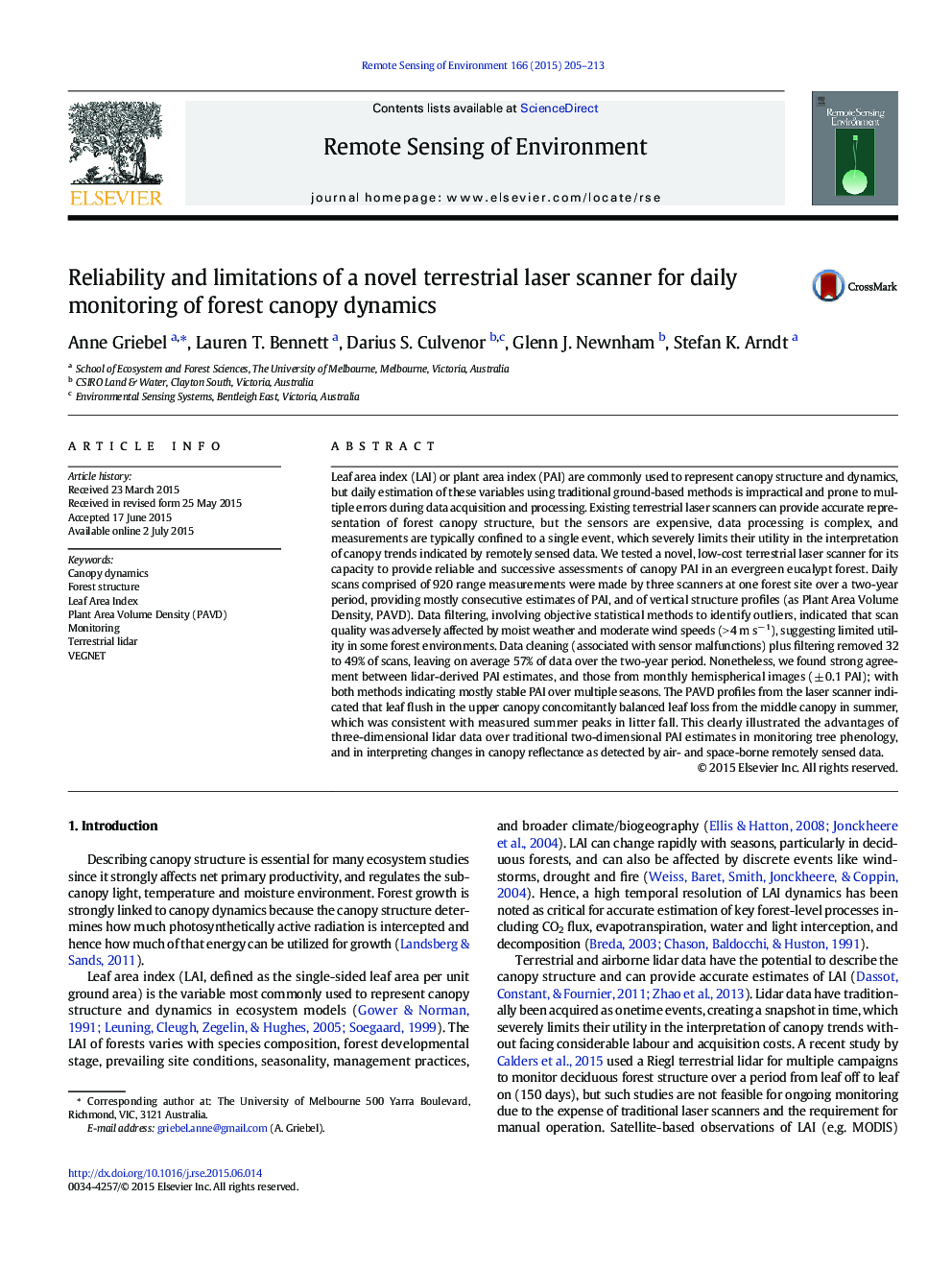| کد مقاله | کد نشریه | سال انتشار | مقاله انگلیسی | نسخه تمام متن |
|---|---|---|---|---|
| 6345933 | 1621234 | 2015 | 9 صفحه PDF | دانلود رایگان |
عنوان انگلیسی مقاله ISI
Reliability and limitations of a novel terrestrial laser scanner for daily monitoring of forest canopy dynamics
ترجمه فارسی عنوان
قابلیت اطمینان و محدودیت های یک اسکنر لیزری زمینی جدید برای نظارت روزانه دینامیک سایبان جنگل
دانلود مقاله + سفارش ترجمه
دانلود مقاله ISI انگلیسی
رایگان برای ایرانیان
کلمات کلیدی
موضوعات مرتبط
مهندسی و علوم پایه
علوم زمین و سیارات
کامپیوتر در علوم زمین
چکیده انگلیسی
Leaf area index (LAI) or plant area index (PAI) are commonly used to represent canopy structure and dynamics, but daily estimation of these variables using traditional ground-based methods is impractical and prone to multiple errors during data acquisition and processing. Existing terrestrial laser scanners can provide accurate representation of forest canopy structure, but the sensors are expensive, data processing is complex, and measurements are typically confined to a single event, which severely limits their utility in the interpretation of canopy trends indicated by remotely sensed data. We tested a novel, low-cost terrestrial laser scanner for its capacity to provide reliable and successive assessments of canopy PAI in an evergreen eucalypt forest. Daily scans comprised of 920 range measurements were made by three scanners at one forest site over a two-year period, providing mostly consecutive estimates of PAI, and of vertical structure profiles (as Plant Area Volume Density, PAVD). Data filtering, involving objective statistical methods to identify outliers, indicated that scan quality was adversely affected by moist weather and moderate wind speeds (> 4 m sâ 1), suggesting limited utility in some forest environments. Data cleaning (associated with sensor malfunctions) plus filtering removed 32 to 49% of scans, leaving on average 57% of data over the two-year period. Nonetheless, we found strong agreement between lidar-derived PAI estimates, and those from monthly hemispherical images (± 0.1 PAI); with both methods indicating mostly stable PAI over multiple seasons. The PAVD profiles from the laser scanner indicated that leaf flush in the upper canopy concomitantly balanced leaf loss from the middle canopy in summer, which was consistent with measured summer peaks in litter fall. This clearly illustrated the advantages of three-dimensional lidar data over traditional two-dimensional PAI estimates in monitoring tree phenology, and in interpreting changes in canopy reflectance as detected by air- and space-borne remotely sensed data.
ناشر
Database: Elsevier - ScienceDirect (ساینس دایرکت)
Journal: Remote Sensing of Environment - Volume 166, 1 September 2015, Pages 205-213
Journal: Remote Sensing of Environment - Volume 166, 1 September 2015, Pages 205-213
نویسندگان
Anne Griebel, Lauren T. Bennett, Darius S. Culvenor, Glenn J. Newnham, Stefan K. Arndt,
